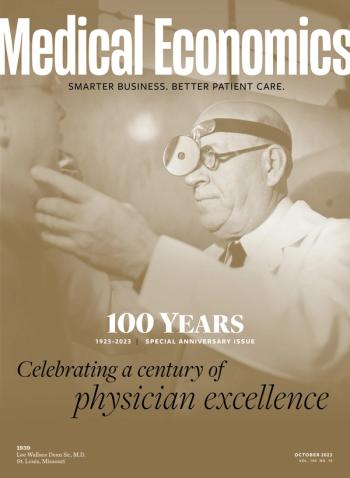
- Medical Economics October 2023
- Volume 100
- Issue 10
How modern medicine was made, part 6: Military medicine advanced health care for soldiers and civilians
Advances in infection control, surgery, antibiotics and trauma that are used to treat patients today were essentially forged on the field of battle over the last 100 years.
War and peace each have led to medical discoveries that save lives. Since 1923, and even before, there has been a steady flow between military and civilian medicine. Physicians take their peacetime training into combat and the lessons of the battlefield — and afterward — lead to advances in care. Advances in infection control, surgery, antibiotics and trauma that are used to treat patients today were essentially forged on the field of battle over the last 100 years, according to physicians, historians and other experts interviewed.
In 1941, World War II raged in Europe as the scientist Howard Florey moved penicillin research from Oxford University in England to the U.S. Department of Agriculture’s Northern Regional Research Laboratory in Peoria, Illinois. Three years later, this research led to 2.3 million doses to help the wounded on D-Day.
When word got out among the civilian population, the new wonder drug captured the public imagination, says James E. Kirby, M.D., professor of pathology at the Beth Israel Deaconess Medical Center. He cited the historic illustration that proclaimed, “Thanks to PENICILLIN … He Will Come Home!"
Two enemies
A wartime armed force fights on at least two fronts: one against a declared enemy, another against disease.
The 1918 Spanish flu pandemic is linked in history to the end of World War I, when the U.S. Army expanded and shipped soldiers to Europe and back. Widespread illness compelled research through the 1920s and 1930s, and in 1944 the Army implemented the nation’s first mass use of influenza vaccines in soldiers. Civilians got it the following year.
In Vietnam, disease accounted for 69% of hospital admissions in the country from 1965 to 1969; battle injuries and wounds were just 1 in 6, Army Maj. Gen. Spurgeon Neel wrote in “Medical Support of the U.S. Army in Vietnam, 1965-1970.”
Because soldiers must deploy to foreign lands, military researchers continue to study how to prevent illnesses such as dengue fever, chikungunya and malaria, says retired Army Col. Terry M. Rauch, Ph.D., director of medical research and development in Health Readiness Policy and Oversight in the U.S. Department of Defense. That’s largely a military function because those diseases don’t capture the attention of the large pharmaceutical makers, he added.
“Our strategy has always been to work on medical countermeasures against endemic infectious diseases,” Rauch says. “We want to protect the force before we send them into those environments.”
Trauma
In Vietnam, the single most visible advance in combat medicine may be the use of helicopters to speed wounded fighters to advanced care. There were other factors: ready availability of whole blood, well-established forward hospitals, advanced surgical techniques and improved medical management, Neel’s analysis says.
Advances in trauma care continued in the Gulf War and the war on terror in Iraq and Afghanistan, Rauch says.
“What we have learned from Iraq and Afghanistan is, uncontrolled hemorrhage remains the leading cause of preventable death on the battlefield, and most of this occurs in the pre-hospital setting before we can get the casualty to a surgeon,” Rauch says.
Traumatic injuries are a leading cause of death and disability worldwide, and about 40% of that mortality is due to excessive bleeding, so the military advances save lives when applied in civilian medicine, he says.
Just how prevalent is trauma in civilian life? The World Health Organization (WHO) estimates that 1.35 million people die each year just in traffic crashes. That’s more than HIV-AIDS, tuberculosis and malaria combined, according to one analysis, and the World Bank estimates that problem is getting worse, not better. Rauch cited WHO estimates that more than 170 million people a year are affected by conflict and 190 million by disasters, which can cause traumatic injuries.
“In many instances, combat casualty care on the battlefield can look a lot like civilian casualty care in disasters and complex emergencies and that theme is repeated over and over again,” Rauch says.
Making whole the wounded
Speed and supplies are essential to treat the wounded in battle. Once troops come home, their medical journeys may not be over. Rauch pointed to the Armed Forces Institute of Regenerative Medicine, which has five major research programs: injuries to the extremities, skin and genitourinary-lower abdominal area; craniomaxillofacial reconstruction; and face and limb transplants.
“Because of body armor, because of our ability to get to them, we were able to save them,” Rauch says. “But that also sets up another problem, and that is, how do you make those individuals whole again? So our investment in rehabilitation and regenerative medicine over the last 10 to 12 years has really become fundamental to making our wounded, ill and injured service members whole again.”
How modern medicine was made: Table of contents
Introduction Part 1: The importance of medical imaging Part 2: The power of vaccination Part 3: The history of antibiotic development Part 4: The importance of insulin's discovery Part 5: The development of surgery and organ transplantation Part 6: Military medicine advances health care for soldiers and civilians Conclusion: Improving lives
Articles in this issue
about 2 years ago
The future of medicine - what patients expectabout 2 years ago
The doctors bag in 2023about 2 years ago
The doctor's bag in 1923over 2 years ago
A century of primary care transformationNewsletter
Stay informed and empowered with Medical Economics enewsletter, delivering expert insights, financial strategies, practice management tips and technology trends — tailored for today’s physicians.







